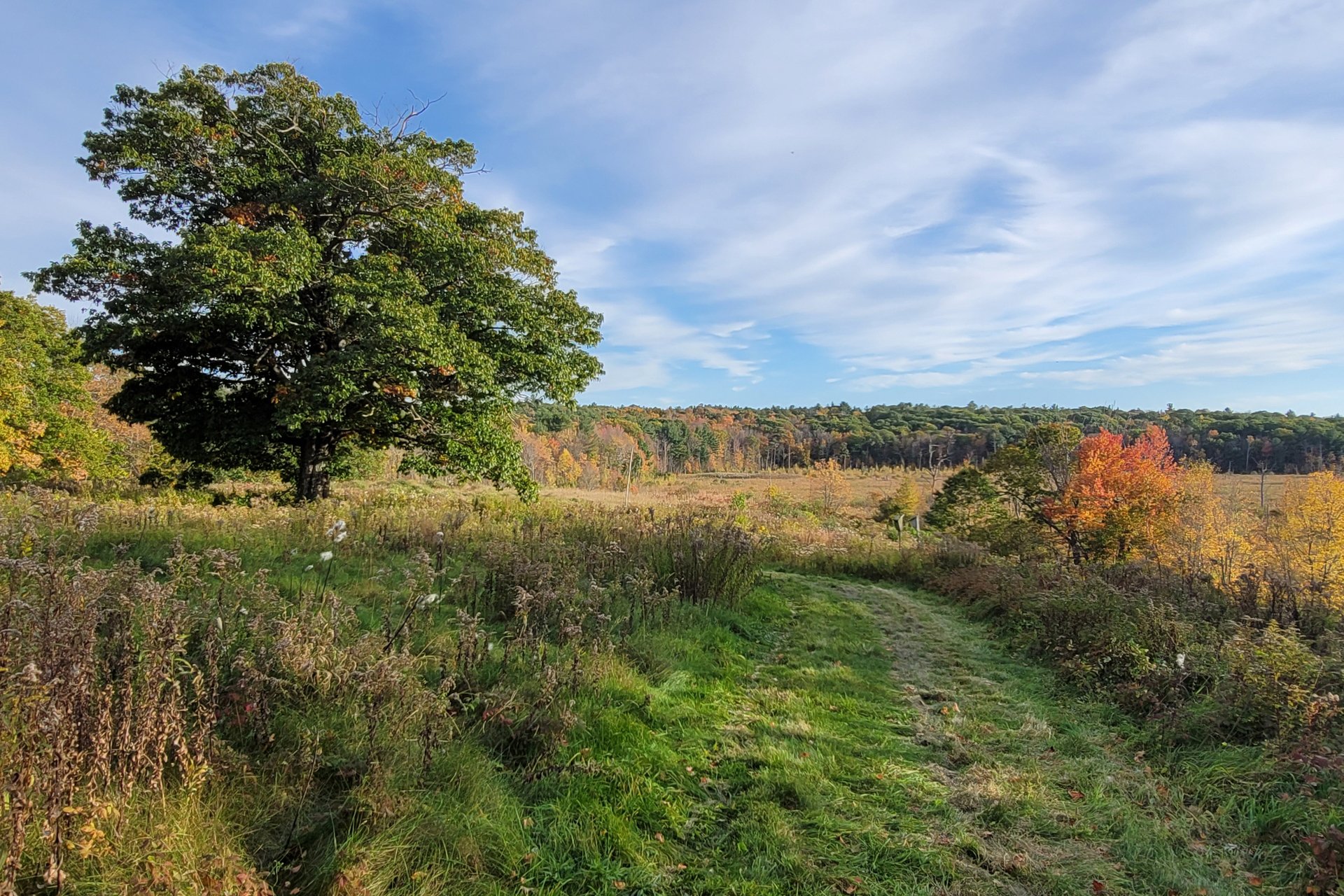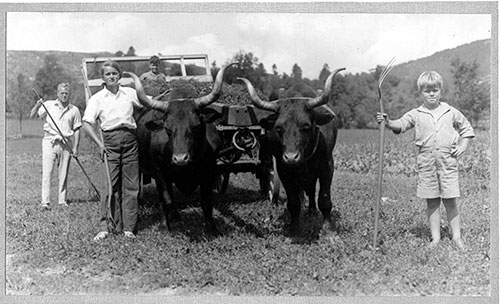Wachusett Meadow Wildlife Sanctuary
History of Wachusett Meadow
Wachusett Meadow has a rich human and natural history that has shaped its landscapes, influenced land use and management, and continues to contribute to both the people and the wildlife that are connected here.
A Generational Farm
The first permanent settlers here were Edward and Lois Goodnow, who arrived in in the 1770s. The Goodnows farmed, built the house and horse barn, raised a large family, and even operated the farmhouse as an inn for stagecoach travelers.
In 1917, Edward's grandson Moses sold the property to the Crocker family from Fitchburg. The Crockers spent idyllic summers at the farm, riding horses, and raising cattle, sheep, and sheepdogs. And they loved this land.
In November 1956, C.T. Crocker III donated almost 600 acres of land and the two houses and barns to Mass Audubon. Family members wanted others to experience farm life, nature, and a beautiful environment forever. And the result has been just that.
Becoming a Wildlife Sanctuary
Since becoming Mass Audubon sanctuary more than 60 years ago, Wachusett Meadow has grown to over 1,000 acres with 12 miles of trails. It serves thousands of visitors, students, scouts, and camp families each year. Our mission protects the meadows, woodlands, shrublands, and wetlands that support diverse wildlife in every season. And the sanctuary serves as a living laboratory and classroom for conservation science.
About Our Buildings
The Cow Barn
- Built in 1924 by the Crocker family.
- Housed the Crockers prize winning cows.
- The structure of this barn was unusual for the time as it used truss-type construction rather than usual post and beam. This allowed plenty of room to stack loose hay.
- The cow barn had a track system with grappling hooks that allowed mechanized unloading of hay wagons and the piling of loose hay, as bales were not used at this time.
- To move out manure, the Crockers installed an overhead tramway in the milking parlor of the barn. It had a scoop which collected manure and used a tram system to move through the barn and across the stockyard to the manure barn.
The Manure Barn
- Now called the Hay Day Inn.
- Stored manure from the farm’s animals.
- It was filled with manure on the sides with a drive-in space between for manure wagons to be easily loaded.
The Horse Barn
- Built in approximately 1830 by the Goodnows.
- Used to house the oxen and horses which the Crockers used to pull wagons and plow the fields.
- Originally faced what is now the parking lot, and was moved by the Crockers to its current position facing Goodnow Road.
- The Crockers kept horse and tack on the first floor, giving the barn its name.
- Inside the barn are elevated hay-mows, transom hooks for loose hay storage, horse stalls, and a shoeing platform for oxen and draft horses.




